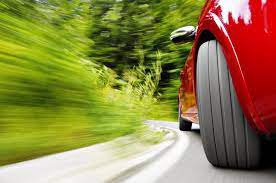Driving Techniques That Are Harmful To Your Tyres
3 min read
Driving Techniques
Tyres are one of the key components that dictate a vehicle’s safety and performance. Damaged tyres can lead to deep impact collisions and adversely affect handling. Since tyres are in constant contact with the surface, you must pay attention to their maintenance. Well-maintained tyres work efficiently with the braking mechanism and preserve your vehicle’s fuel economy.
Additionally, good condition tyres can also save you from constant replacement and maintenance costs. Tyre maintenance is quite simple, and it doesn’t require intervention from professionals. You can read the home guide to maintenance online and proceed accordingly. Apart from routine maintenance, you can tweak your driving methods to suit your tyres’ needs. Here are some of the driving techniques that are unknowingly harming your tyres.
Rash acceleration
Sudden acceleration is one of the most problematic driving methods. It means that you accelerate the vehicle on top gear from rest. This exerts a sudden force on the tyre, and inertia and other frictional forces damage the tyre compound. Additionally, people also tend to accelerate when the brakes are applied.
This is done to perform burnout to showcase the engine power. While this may get you social accolades, it is extremely harmful to Winter Tyres London. The rubber marks on the surface deplete the outer wall, which adversely affects the wet-grip handling. Therefore, always accelerate gradually, and make sure to release the brakes before moving ahead.
Rash braking
Rash braking is also very common among car owners. This pertains to the practice where the driver applies brakes with full force at high speeds. This leads to two opposing forces acting on the tyres, which is detrimental to their condition. The braking mechanism is based on hydraulic principles, hence, it generates a lot of force to decelerate the car.
Additionally, the treads and sidewalls experience exorbitant pressure, which can lead to cracks. Cracks are responsible for slow punctures and disturbed handling. Hence, incorporate gradual braking into your driving routine.
Also, if you regularly drive in mild traffic, use the GPS system to anticipate the traffic movement. Accordingly, manage the speed of your vehicle. Lastly, maintain a safe distance from the vehicle ahead of you to have some time to slow down before applying brakes in case of emergencies.
Not engaging 4WD on slopes
This is a blatant mistake people make when driving on inclined planes. All-wheel drive is a new technology and people are yet not accustomed to it. 4WD ensures that the engine powers all four wheels for maximum grip and traction.
Therefore, if you are driving on a 2WD on such slopes, only front Tyres London will be engaged, and they will drag along the rear tyres. This causes unwarranted damage to the rear tyres. Damaged rear tyres can also affect the tyre rotation process.
Driving on an overloaded vehicle
Every tyre has a load rating, and one must keep within that limit to protect the tyre’s condition. Overloading pushes the tyre further into the ground and the frictional force acting on the tyre increases. Extra force heats the tyre, and the air starts to expand.
Air expansion exerts an extra force on the inner walls, which leads to tyre bursts at high speeds. This can cause ugly collisions and accidents. Additionally, overloading damages the sidewalls over time, which can lead to early replacement. For this reason, note your tyres’ load rating and find a cumulative capacity.
Rash driving on poor roads
Speeding over patches and potholes exposes the sidewalls, and leads to early damage. The potholes present on the surface already exerts high pressure on the sidewalls. On top of it, if you speed over such surfaces, you are all set to sacrifice your tyres’ life.
Potholes are responsible for tyre bulges, and bulges are responsible for tyre bursts. Similarly, patches lead to several cracks in the sidewalls, which is a primary cause of slow punctures. Hence, slow down immediately if you spot a poor surface ahead.






